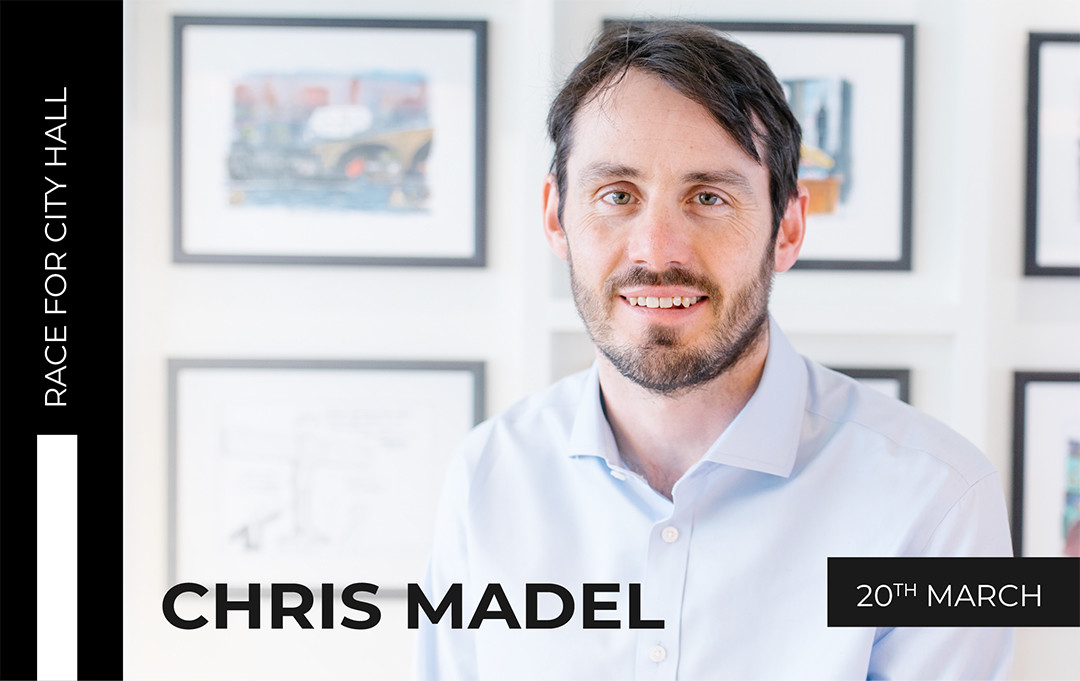Posted: 20.03.24
Race for City Hall: The role of transport and infrastructure in London’s politics
In the run up to the creation of the GLA in 1999 and in the first two mayoral elections, the capital’s transport and infrastructure was often the primary area for debate and policy making.

London’s transport network was viewed as a national and global embarrassment in the 80s and 90s with a dirty, unreliable and overcrowded Underground, gridlocked roads in the centre of the city, and confusing and inefficient buses. Much of the campaign for a Mayor for London therefore pointed to the need for an elected official with the powers to invest in and integrate the network, bringing together the boroughs, national government and the private sector to make much needed improvements to help London’s residents, workers and visitors.
London’s first Mayor, Ken Livingstone, put transport at the heart of the 2000 campaign with his manifesto stating that the ‘single most important priority will be to solve the crisis of London’s transport system.’ And much of Livingstone’s eight years at City Hall and his two election wins were defined by his policies and campaigns on transport, notably the congestion charge, his fierce opposition to the Tube private public partnership, the introduction of the Oyster card, securing backing for Crossrail and a simpler and cheaper bus fare system.
Livingstone’s Conservative successor Boris Johnson had less totemic policies and transport as a whole had arguably dropped down Londoners’ priorities replaced by crime, particularly during the 2008 campaign, and housing. However, Johnson did oversee the introduction of the bike hire scheme (although there remains disagreement over whether this was a Ken or Boris idea!), the new Routemaster bus, preparing the network for the 2012 Olympics, as well as strongly making the case for an increase in London’s runway capacity (although noticeably opposing Heathrow expansion and instead advocating for a new four runway hub in the Thames Estuary – the so-called Boris Island).
So where does transport and infrastructure sit going into the 2024 election and what are the areas that might be in voters’ minds when considering Sadiq Khan’s record since 2016? Much of the past few years has been dominated by TfL’s finances and the huge challenge created by Covid, generating intense and often heated negotiations between City Hall and Whitehall over a bailout package and long-term funding deal. The current settlement of £250 million for 2024 has been heavily criticised by Khan (who requested £500 million) as being insufficient for major capital projects, particularly the Bakerloo Line improvements and much-delayed Crossrail 2.
Expect these messages to feature strongly in his campaign and Keir Starmer to be pressed as to the financial support which a possible future Labour Government could provide – after all, the pipeline of big schemes is currently empty. Khan will likely also highlight his recent fare reductions on Fridays, the fares freeze (although this does result in a loss of income for upgrades and maintenance) and the growth in passenger numbers over the past year which has seen TfL return to the black, generating an operating surplus for the first time in its short history.
The attack lines from Sadiq’s opponents have been quite varied over the past few months with the Conservative’s Susan’s Hall focusing on Khan’s ‘war on the motorist.’ Hall’s commitments to scrap the ULEZ expansion and allow councils to remove Low Traffic Neighbourhoods (LTNs) will likely play well with many outer London residents, her core voter base. It will be interesting to see how much of a role the battle for contested road space plays in determining the race for City Hall.
Meanwhile the Lib Dems’ Rob Blackie has focused on crime on the TfL network and improvements to public transport in outer London, while the Greens’ Zoe Garbett has pledged to reduce fare for young and old people as well as doing more to widen and support London’s cycling demographic.
We’ll be seeing much more detail on transport from all the mayoral candidates in the coming weeks and subsequent scrutiny over the promises of shiny, new projects and initiatives versus the financial pressures that TfL will likely remain under for several years to come. Thankfully, the capital’s transport network is in a much better place than it was 25 years ago, and it rightly remains a cornerstone of the Mayor’s role.
But in the short history of London’s mayoralty and TfL’s 24-year history, transport has shown itself key to regeneration, building homes and economic development – a real place-shaper and more than just an operator of buses, tubes, trains and trams. The next Mayor will want this to continue, but there remains a steady stream of challenges that need overcoming to ensure that London remains a city that can be travelled through cheaply, quickly, safely and sustainably.
